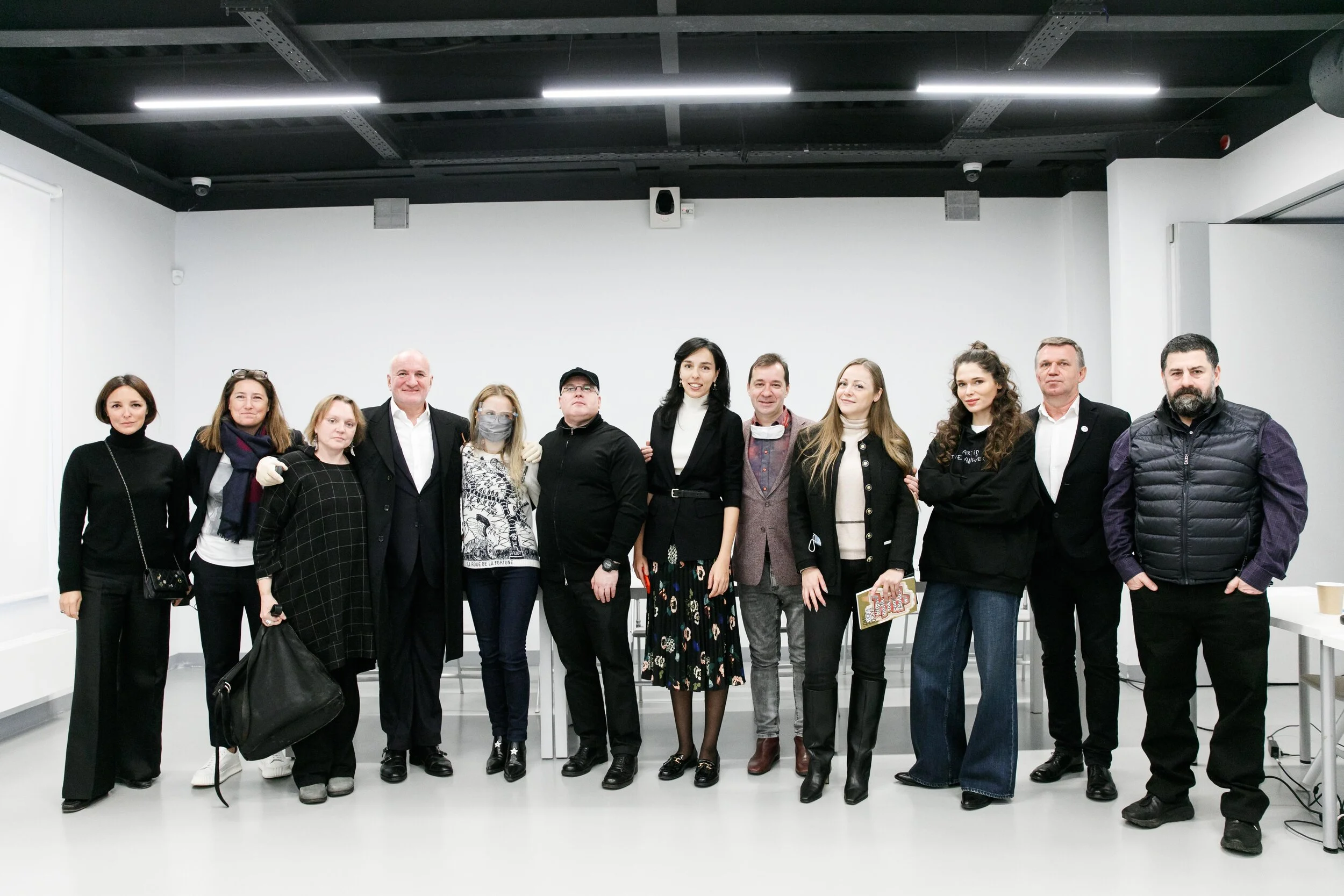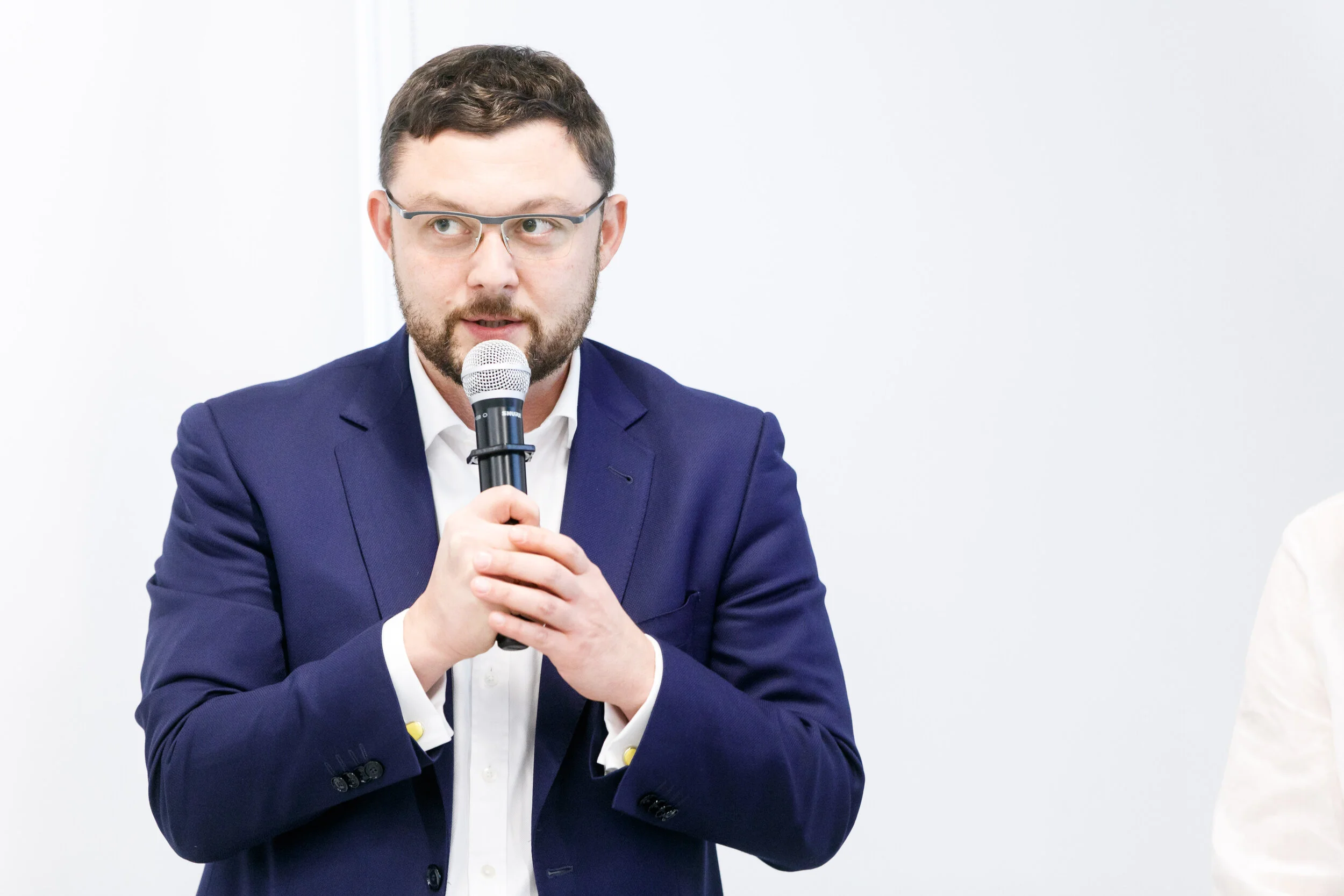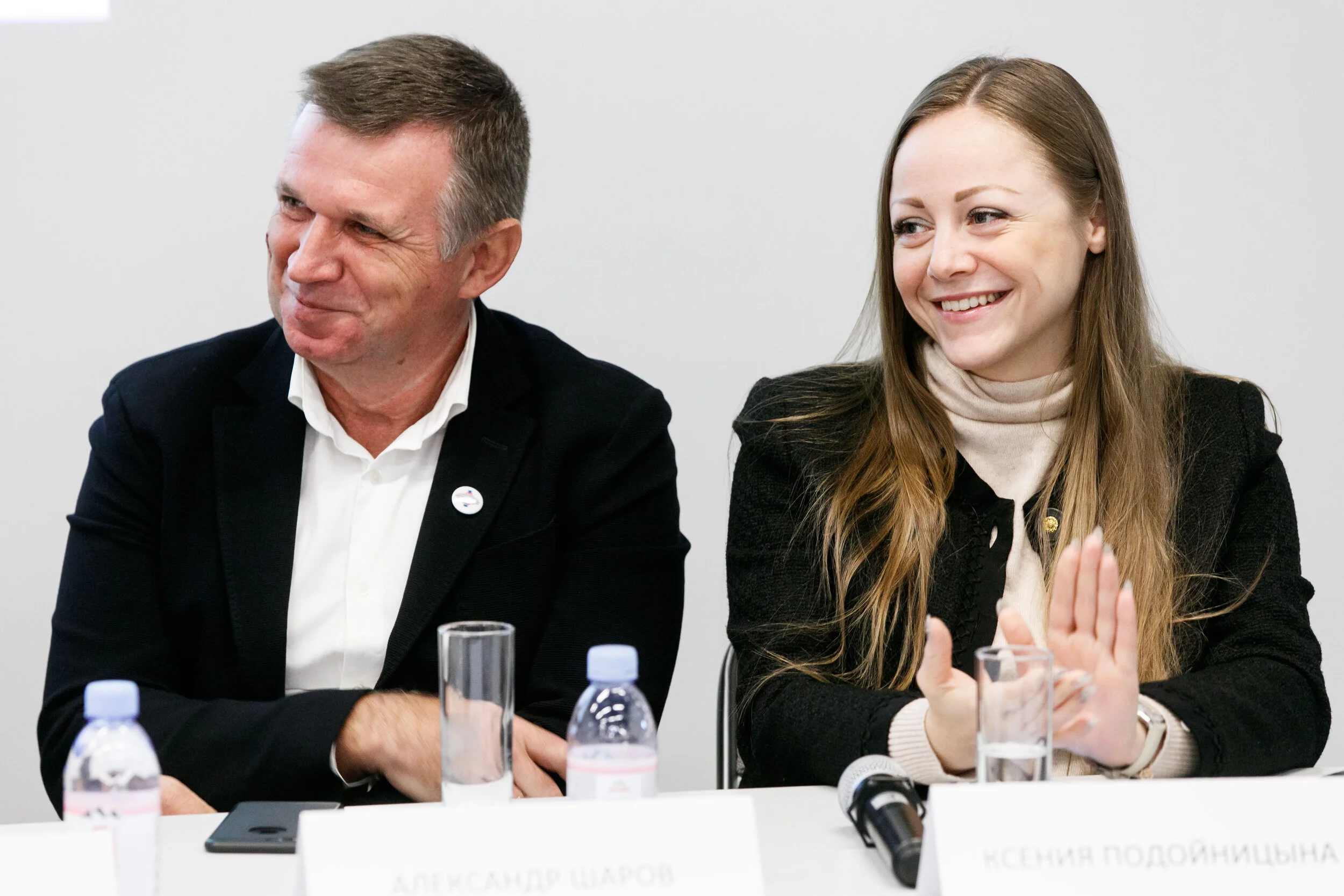Marina & Sergey, gallerists and board members of the Association of Galleries
One month ago, a significant event happened in the Russian art market - galleries decided to unite. The formation of the Association of Galleries is a truly grassroots initiative that has become a new milestone for further development. Among the Association's plans is providing assistance to its members, including legal, organisational and educational support. We met with two members of the Board - Sergey Popov, founder of pop/off/art gallery, and Marina Gisich, founder of Marina Gisich Gallery, to discuss all the twists and turns of the Russian art market and the way the Association is planning to tackle current issues.
This year the pandemic and the crisis it created have seriously affected the art market. Is the situation so difficult that it created the idea for the Association? Or the idea was born earlier? Who initiated it?
Elena Selina and Sofia Trotsenko
Sergey: An attempt to create an Association was made before. To be more precise, this is the third attempt. Sofia Trotsenko, director of the Winzavod Center for Contemporary Art, where many leading Moscow galleries are located, knows firsthand the difficulties that Russian gallery owners face, and came up with the idea. The Association is a Trade Union of galleries with regular membership fees, which is primarily a working tool for the galleries themselves. Many galleries have accumulated a vast number of questions and problems that they are not able to solve alone due to lack of time and financial resources.
Marina: Yes, the idea of creating an Association emerged a long time ago. In St. Petersburg, we tried to form something similar, but it was slightly more local. Today, the Association aims at being federal. We’ve been growing with the Russian art market and have amassed enough experience, as gallery owners, to be ready to work together more to solve problems.
How many galleries are currently part of the Association?
Sergey: The Association currently includes 16 galleries. Among the participants are such galleries as 11.12 Gallery, pop/off/art Gallery, Triumph Gallery, InArt Gallery, Totibadze gallery, XL gallery, Vostochnaya Gallery, Syntax Gallery, Krokin Gallery, Askeri Gallery, Triangle Gallery, a-s-t-r-a gallery, Kultproekt, Anna Nova Gallery, Vera Pogodina gallery and the Marina Gisich Gallery. The unification process was going on all summer, and I expect that at least 30 other galleries will join us before the beginning of next year. Of course, in the future, we would like to gather as many members as there are galleries in the country. One of the most significant tasks of the Association is to become a tool that will unite professionals on the Russian art market. It was interesting to see how many people on the WhatsApp groups asked about each other and got to know each other when we were launching the Association, even though they have worked in the same environment for many years. Events like Cosmoscow are bringing us together, but the Association is another important unifying factor.
Members of the association at the press conference.
Currently, the Association consists mainly of Moscow galleries and several galleries from St. Petersburg. The Moscow and St. Petersburg art markets are among the most dynamic in Russia. Many regional galleries are far from their high standards. Do you plan to support promising galleries?
Sergey: For young galleries and online projects that do not yet have their own exhibition space, we created the status of "associate member." We accept galleries that, for example, currently do not have the opportunity to pay regular membership fees, but are ready to actively participate in the work of the Association.
Marina: We will work together to resolve issues that are key for the daily operation of all galleries. The Association is open, and any Russian gallery that runs for at least one year and functions as a public platform can join us. Some galleries have a stronger position on the market, some less. Our task is to help emerging galleries that are just starting to build their professional activities by providing them with some legal and organisational assistance. I think that this will be good support for many people. It is a pity that we did not have access to such resources and irreplaceable experience when we were getting set up - we had to learn from our own mistakes.
Let’s talk about the Association's current priorities. In what areas will you work in?
Sergey: We plan to work in many areas, but one of the primary tasks for the Association is to resolve all issues related to customs. Russia has very complex customs legislation, that often causes a lot of trouble when exporting/importing artworks. It destabilises the whole Russian art market. Everyone is facing problems in this area: from large antique dealers to small logistics companies. In the long run, we would like to be able to influence the situation more actively. We are not saying that we plan to directly interfere with changes to existing legislation. However, we do plan to change the fact that existing legislation often is enacted without taking into account the opinions of industry representatives.
Unfortunately, many current officials have retrograde ideas about culture that do not allow us to move forward. The space of contemporary art is often ignored by the Ministry of Culture of the Russian Federation, which is still mainly based on Soviet ideas about the cultural industry. These ideas imply that the role of the heritage keepers holds after museums, while contemporary art is generated mostly within the Artists' Union of Russia (an all-Russian creative public organisation that unites Russian artists and art historians, the successor of the Artists' Union of the USSR). We can see this state of affairs on the scale of the entire country, where every region has its diversity and specific representation. There is too often no place for contemporary art in this scheme. But we are doing things that are changing the history of art from today onwards, to change the cultural landscape of the country. The distribution of state funds, administrative support and the representation of Russian art on international markets depend on officials. Therefore, we will work on it, develop and offer new solutions to change the way officials see and perceive us.
The Association's website mentions that you will take part in brokerage with the state museums, the Ministry of Culture of Russia, and the Department of Culture of the city of Moscow, including gallery owners participating in purchasing commissions and the stimulation of the contemporary art acquisition for the Museum Fund of the Russian Federation. Can you give us some details?
Vassili Tsereteli, director of MMOM, at the press conference
Sergey: The purchase of contemporary art for the Museum Fund of the Russian Federation is quite a difficult topic. Of course, we have very positive examples in this regard. It is fair to mention the Hermitage and the Russian Museum in St. Petersburg. In Moscow, key museums are engaged in this, such as MMOMA (Moscow Museum of Modern Art), that since its foundation has been one of the largest buyers of contemporary art from galleries or directly from artists when there is no gallery involved. But this situation does not apply to the whole country at all. Each region has its cultural landscape that needs to be supported and developed. We have yet to build a model in which state museums would be able to purchase contemporary art for their collections. Unfortunately, over the past 30 years, Russian contemporary art has rarely become a part of any regional museums' collections.
One of the goals of the Association is to establish stable professional and commercial relations with Russian and international organisations, fairs, museums, and institutions. Which international organisations do you plan to cooperate with in future?
Marina: I think this is another significant area of the Association's work. In many countries, the state helps galleries with bonuses and subsidies, allowing them to participate in international art fairs. In Russia, galleries need such governmental programs to develop further. The financial burden is too heavy for galleries, which need to participate in at least 2-3 fairs a year. The Association plans to provide access to information about state benefits and subsidies and to promote the development of programs to facilitate participation in international fairs/exhibitions.
Sergey: We plan to create a specific working group within the Association that will work in this direction. I think that Marina will join this group, as she has a lot of experience in this area. We want to contribute to the creation of the most accessible and transparent information about the Russian art market, and to allow any international collector or curator to visit our website and get up-to-date information about artists, trends and galleries. Because now the knowledge is often limited by resources that do not show the full picture, and many artists/collectors and curators often do not understand with whom and how they can work.
One of the most ambitious announcements was probably the statement that the Association plans to hold a large international exhibition of Russian art abroad in the future. Who, in your opinion, among Russian artists could participate in such an event?
Marina: Speaking on behalf of the Association, I think that projects of international significance like this should be created by a group of experts and preferably Russian curators. They should show the way Russia is well-integrated into the overall context of European contemporary art. It is difficult to say about artists because the selection will take into account all the specifics of the event. For example, as a gallery, we always bear in mind the specifics and concept of the art fair to which we participate. When we enter the international market, we need to show young artists who should be an organic complement to the already formed pool of artists. Each event is a large and complex web, which is each time woven anew.
Sergey: At this stage, this idea is long-term plans. The Association can and should play the role of an expert community in planning large-scale international projects. There are some Russian artists without whom it makes no sense to represent Russia. The issue of international cooperation, in general, cannot be a one-sided process. We, from our side, are ready to provide information on current market trends and artists for different types of international projects.
And my very last and almost traditional question. What do you think the Russian art market lacks today?
Marina: The Russian market probably lacks what we are working on today. We have enough artists and experience. It would be good to have a better functioning art market system, where all elements are harmoniously connected. Today, this is what is missing for my daily work, support so that I can interact with government structures in peace, exhibit my artists and allow them to have transparent information about all the financial and legal corridors in which they work with me. We know that this is a long process. Over the past ten years, we have been trying to build this system one brick at a time. Maybe now, we will be able to do it with the Association.
Alexander Sharov and Ksenia Podoinitsyna
Sergey: I don't see any fundamental problems in our market. The Russian economy has general obstacles that affect the art market as a result. I believe that our market is at a fairly-well-developed stage, and we have all the necessary conditions for future development. I agree with Marina about the need of balance. In addition to this, we still lack trust between all market participants. In general, we see a large amount of funding for the art market but the distribution of public or private funds occurs in such a way that relevant market segments remain underinvested in. In this case, the Association should contribute to a more relevant distribution of funds and increase confidence among all market stakeholders.









